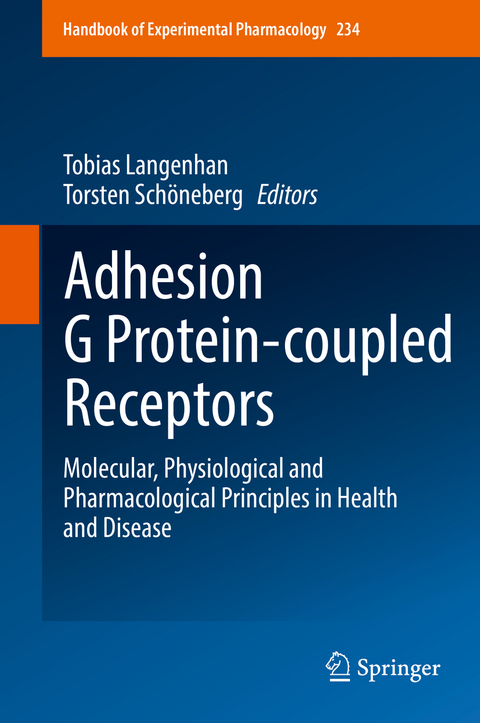
Adhesion G Protein-coupled Receptors
Springer International Publishing (Verlag)
978-3-319-41521-5 (ISBN)
PART I. Molecular and Pharmacological Properties of Adhesion GPCRs:-Classification, Nomenclature and Structural Aspects of Adhesion GPCRs.- 7TM Domain Structure of Adhesion GPCRs.- Understanding the Structural Basis of Adhesion GPCR Functions.-Control of Adhesion GPCR Function Through Proteolytic Processing.-Tethered Agonism: A Common Activation Mechanism of Adhesion GPCRs.- Versatile Signaling Activity of Adhesion GPCRs.- Adhesion GPCR-Related Protein Networks.-The Relevance of Genomic Signatures at Adhesion GPCR Loci in Humans.- PART II: Adhesion GPCRs as Pharmakotargets in Organ Function and Development.- Adhesion GPCRs as a Putative Class of Metabotropic Mechanosensors.- Adhesion GPCRs Govern Polarity of Epithelia and Cell Migration.- Adhesion GPCRs as Novel Actors in Neural and Glial Cell Functions: From Synaptogenesis to Myelination.-Control of Skeletal Muscle Cell Growth and Size Through Adhesion GPCRs.- Adhesion GPCR Function in Pulmonary Development and Disease.-Adhesion GPCRs as Modulators of Immune Cell Function.-Heart Development, Angiogenesis, and Blood-Brain Barrier Function is Modulated by Adhesion GPCRs.-Adhesion GPCRs in Tumorigenesis.
| Erscheinungsdatum | 04.12.2016 |
|---|---|
| Reihe/Serie | Handbook of Experimental Pharmacology |
| Zusatzinfo | XIV, 403 p. 68 illus., 67 illus. in color. |
| Verlagsort | Cham |
| Sprache | englisch |
| Maße | 155 x 235 mm |
| Themenwelt | Medizin / Pharmazie ► Medizinische Fachgebiete ► Pharmakologie / Pharmakotherapie |
| Medizin / Pharmazie ► Pharmazie | |
| Studium ► 1. Studienabschnitt (Vorklinik) ► Physiologie | |
| Studium ► 2. Studienabschnitt (Klinik) ► Humangenetik | |
| Naturwissenschaften ► Biologie ► Biochemie | |
| Naturwissenschaften ► Biologie ► Zellbiologie | |
| Schlagworte | Biomedical and Life Sciences • Cell Biology • Cell-Cell Interaction • Cell-matrix interaction • G protein-coupled receptors • Human genetics • Human Physiology • mechanoreception • medical biochemistry • Metabotropic pathways • Pharmacology/Toxicology |
| ISBN-10 | 3-319-41521-2 / 3319415212 |
| ISBN-13 | 978-3-319-41521-5 / 9783319415215 |
| Zustand | Neuware |
| Informationen gemäß Produktsicherheitsverordnung (GPSR) | |
| Haben Sie eine Frage zum Produkt? |
aus dem Bereich


